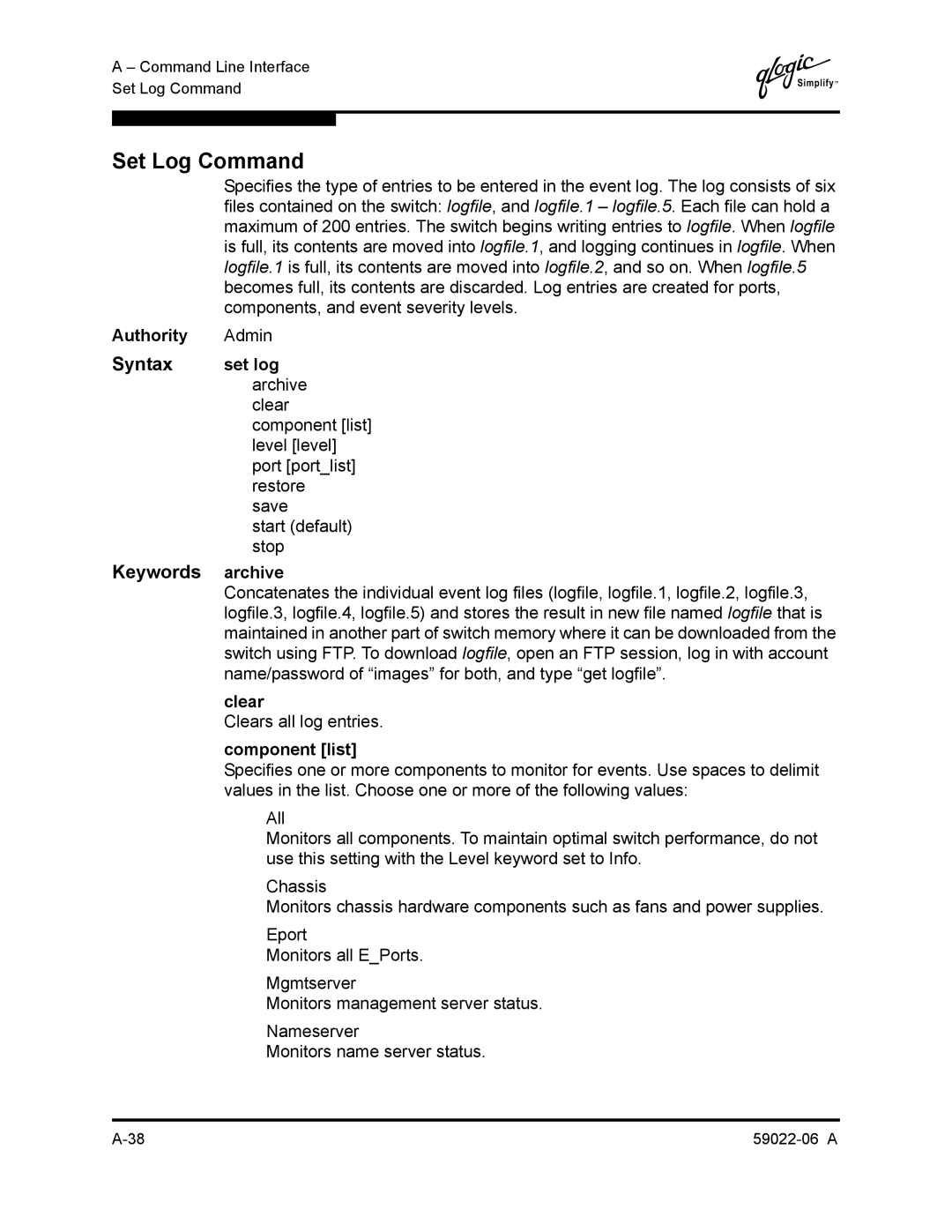
A – Command Line Interface Set Log Command
Q
Set Log Command
Specifies the type of entries to be entered in the event log. The log consists of six files contained on the switch: logfile, and logfile.1 – logfile.5. Each file can hold a maximum of 200 entries. The switch begins writing entries to logfile. When logfile is full, its contents are moved into logfile.1, and logging continues in logfile. When logfile.1 is full, its contents are moved into logfile.2, and so on. When logfile.5 becomes full, its contents are discarded. Log entries are created for ports, components, and event severity levels.
Authority Admin
Syntax | set log |
| archive |
| clear |
| component [list] |
| level [level] |
| port [port_list] |
| restore |
| save |
| start (default) |
| stop |
Keywords archive
Concatenates the individual event log files (logfile, logfile.1, logfile.2, logfile.3, logfile.3, logfile.4, logfile.5) and stores the result in new file named logfile that is maintained in another part of switch memory where it can be downloaded from the switch using FTP. To download logfile, open an FTP session, log in with account name/password of “images” for both, and type “get logfile”.
clear
Clears all log entries.
component [list]
Specifies one or more components to monitor for events. Use spaces to delimit values in the list. Choose one or more of the following values:
All
Monitors all components. To maintain optimal switch performance, do not use this setting with the Level keyword set to Info.
Chassis
Monitors chassis hardware components such as fans and power supplies.
Eport
Monitors all E_Ports.
Mgmtserver
Monitors management server status.
Nameserver
Monitors name server status.
